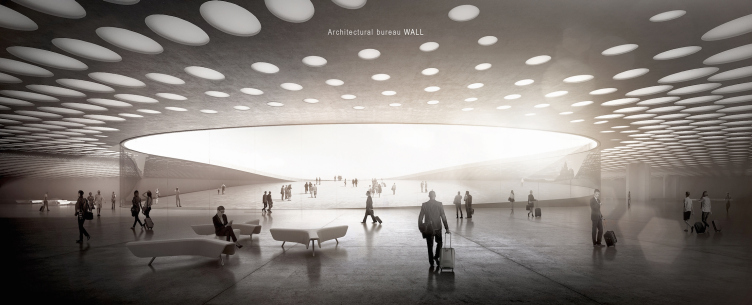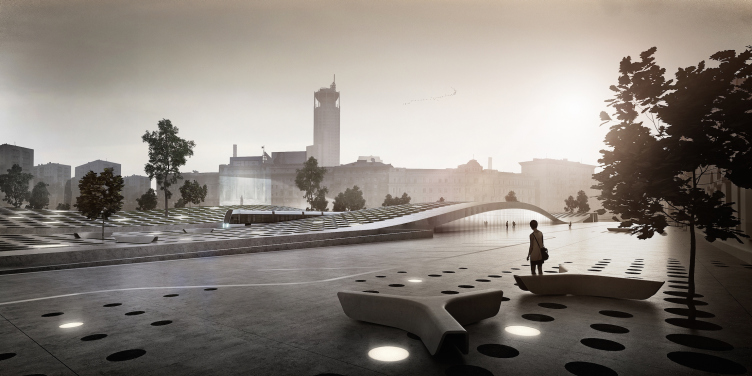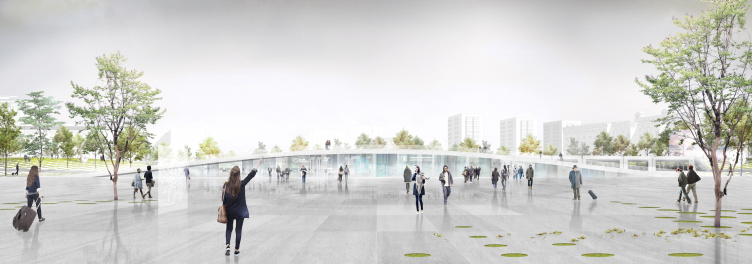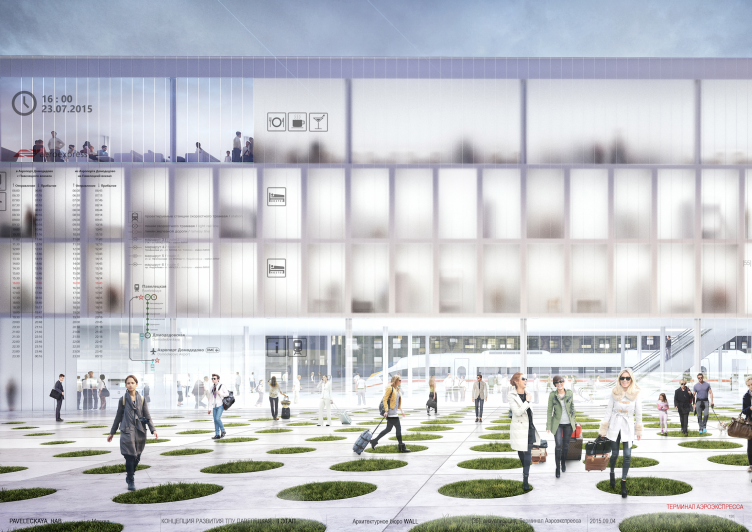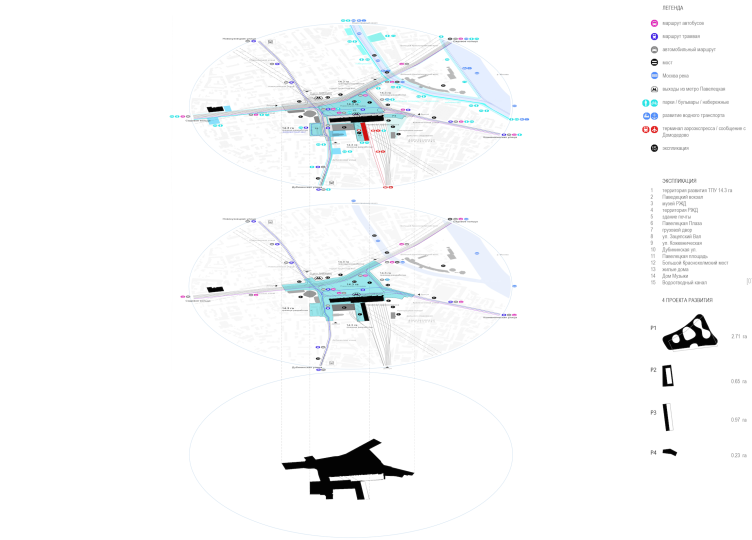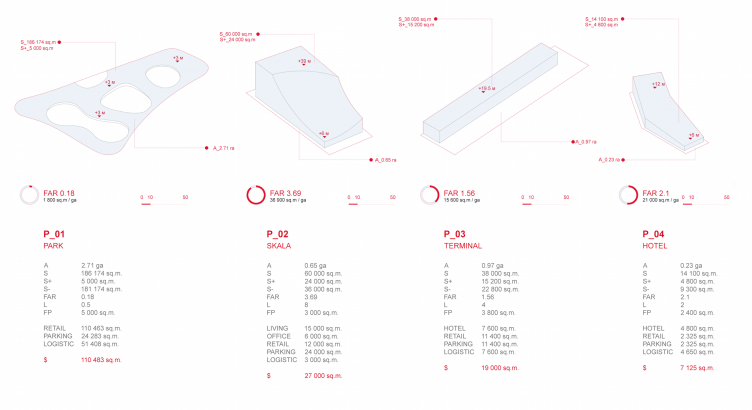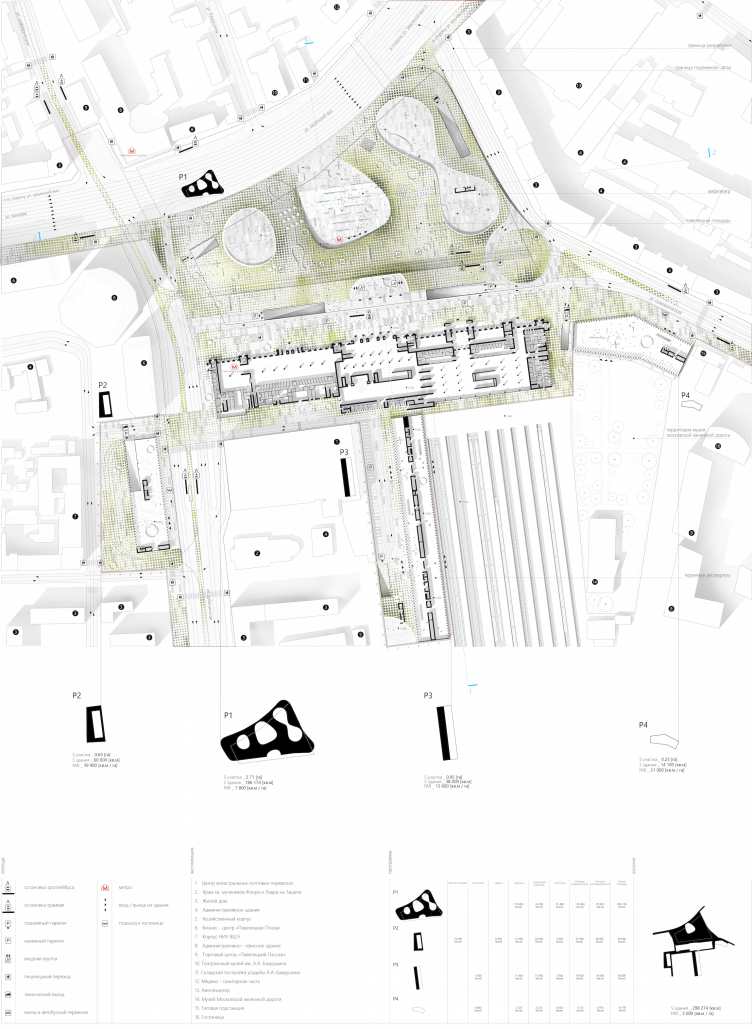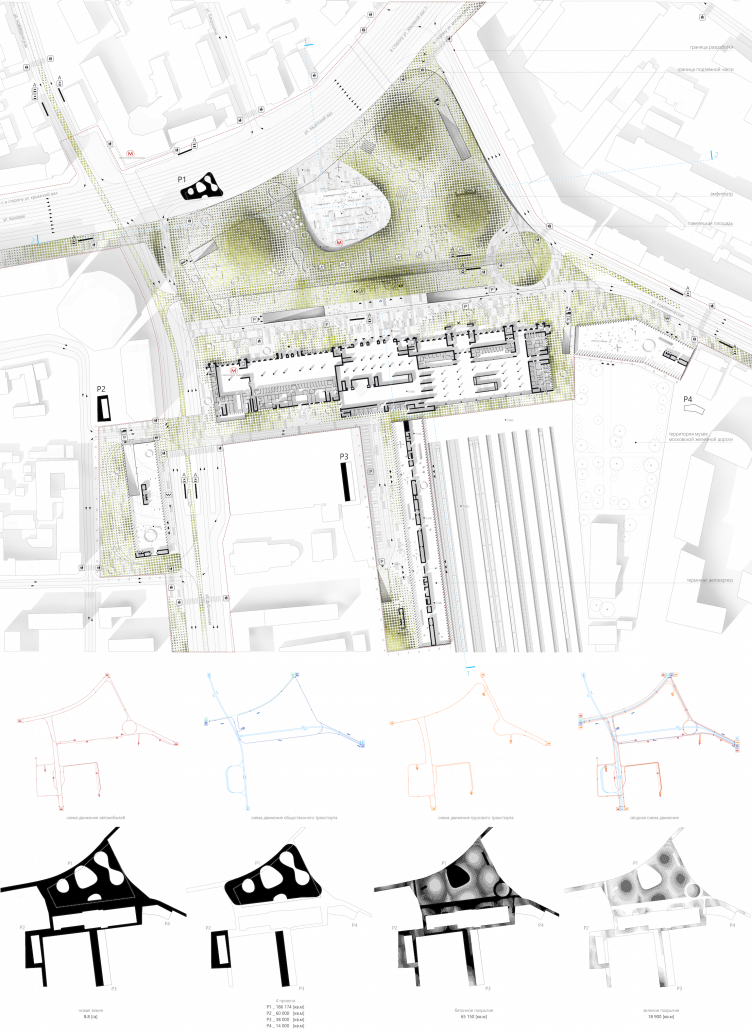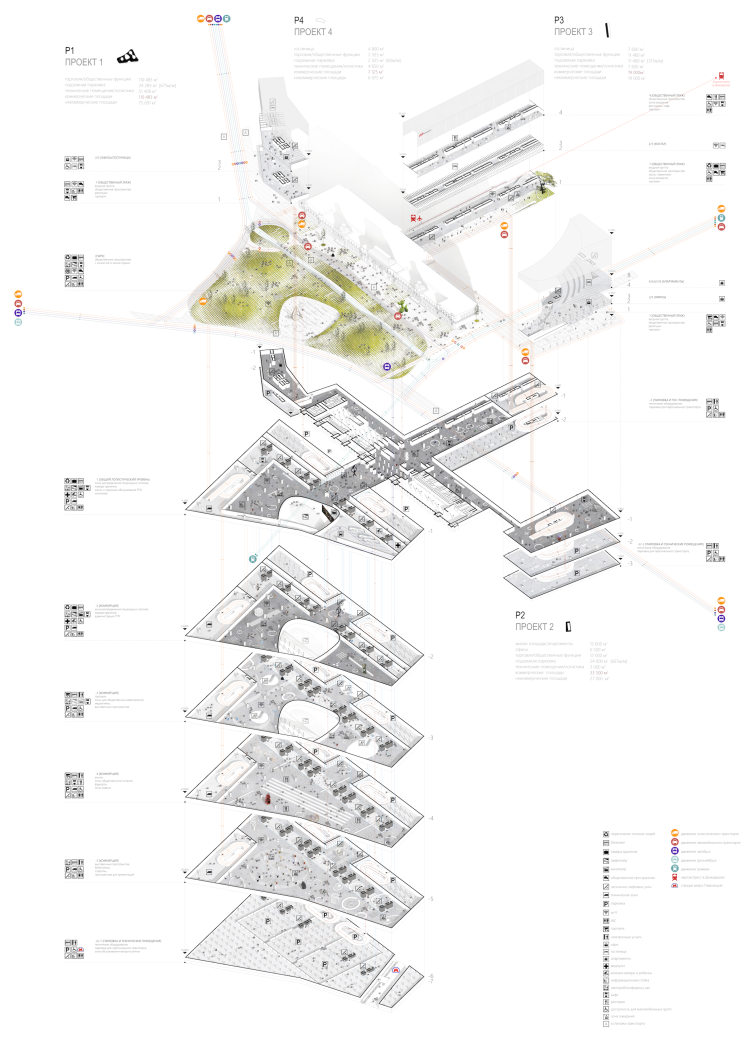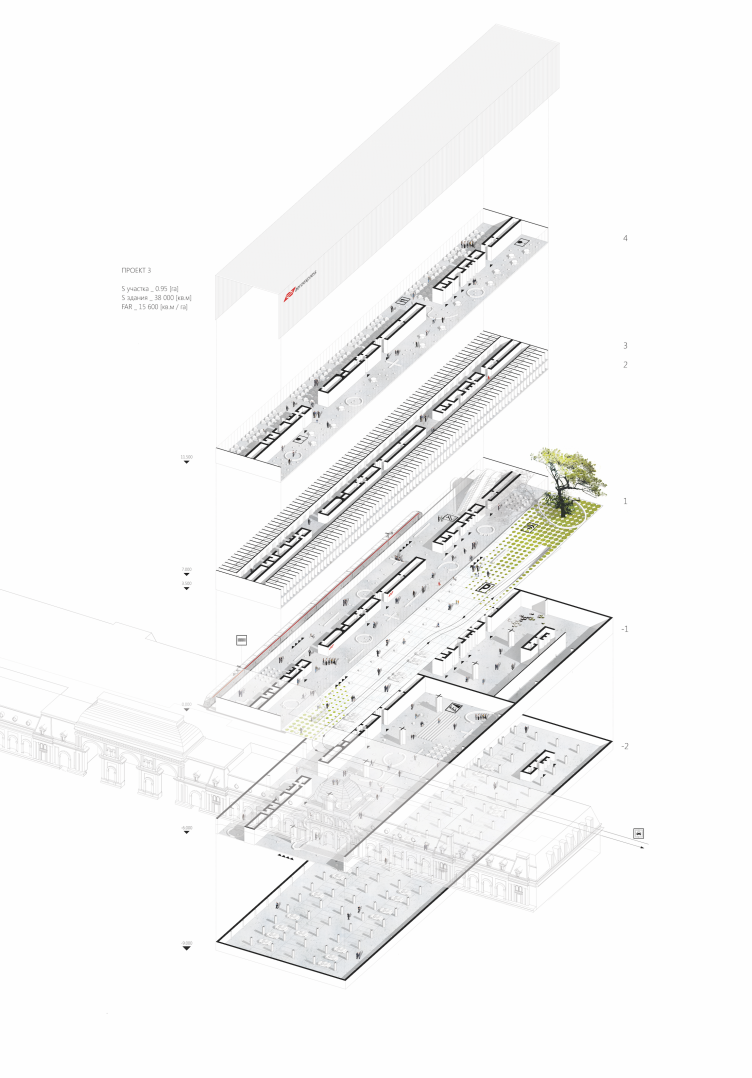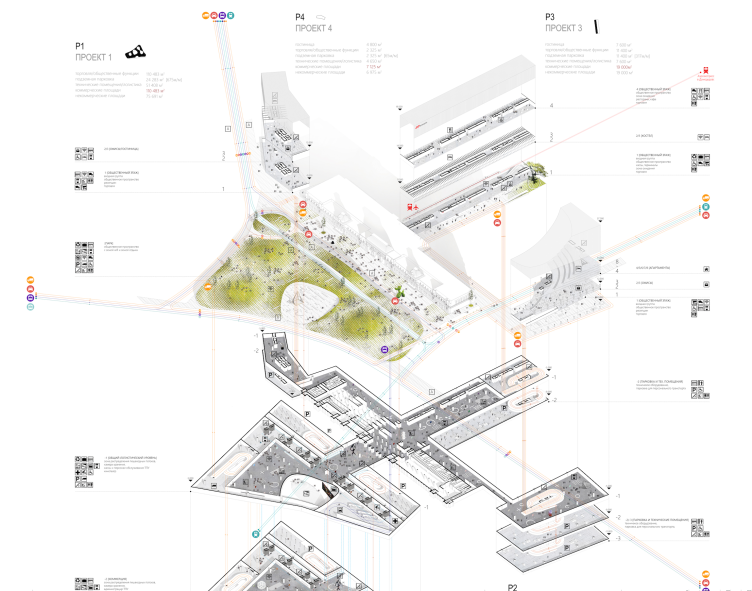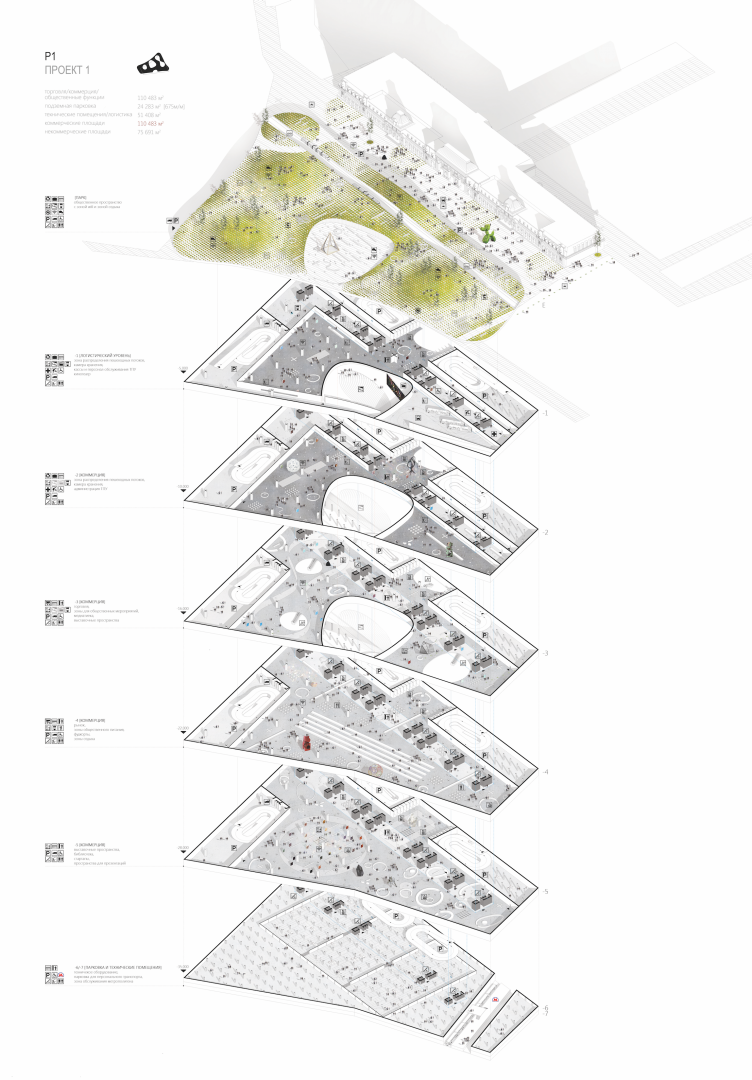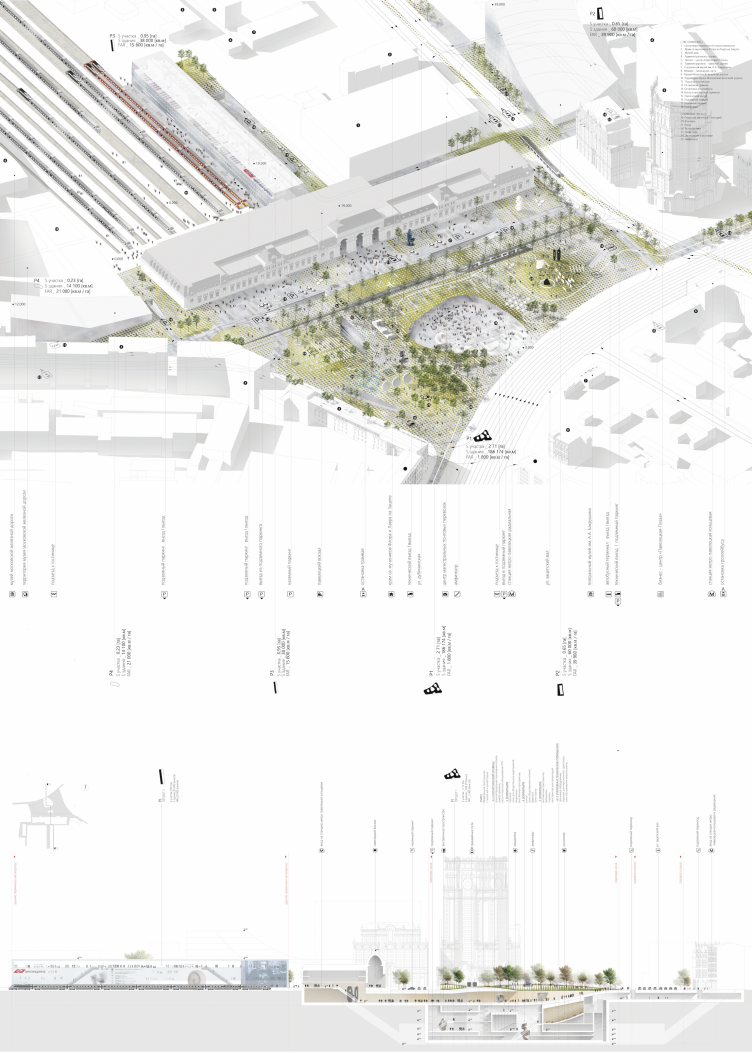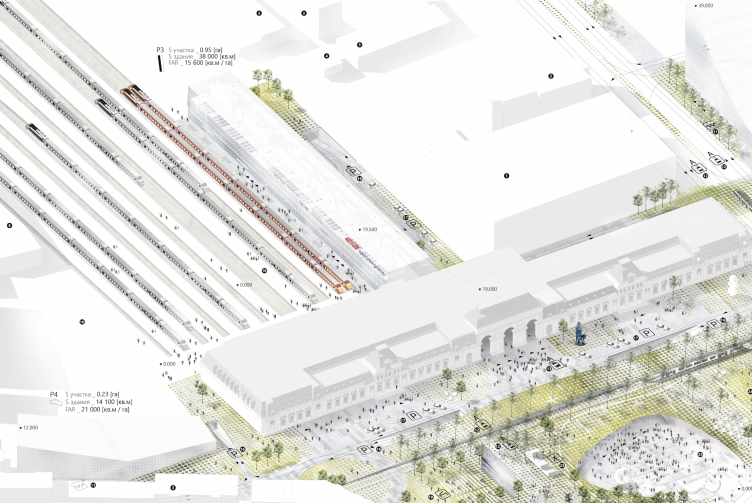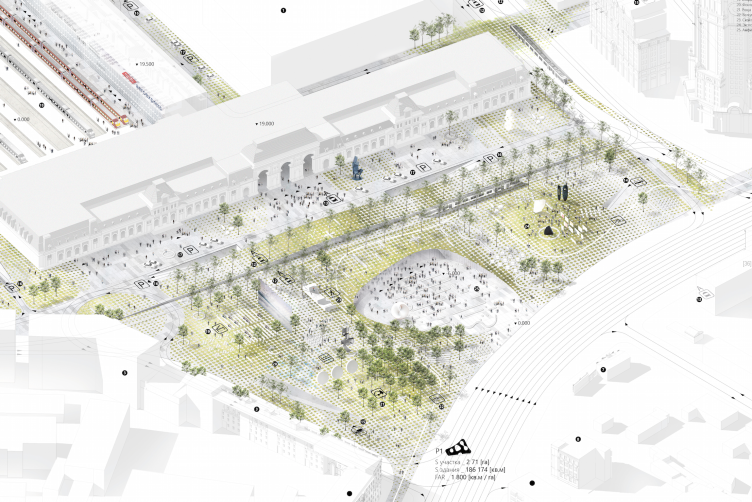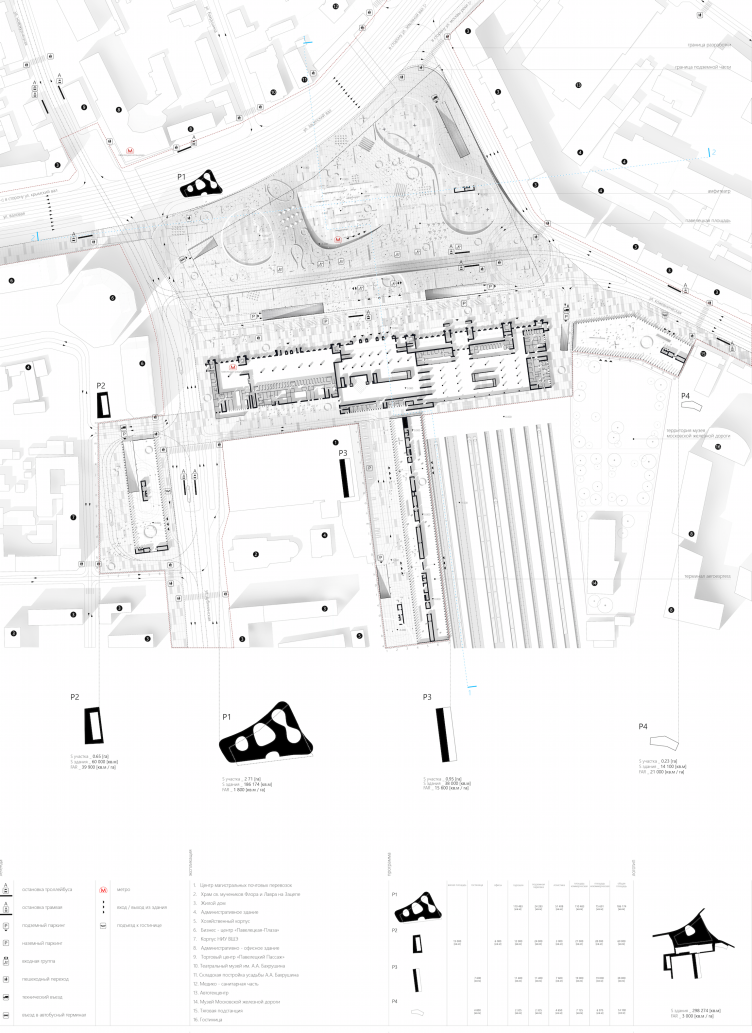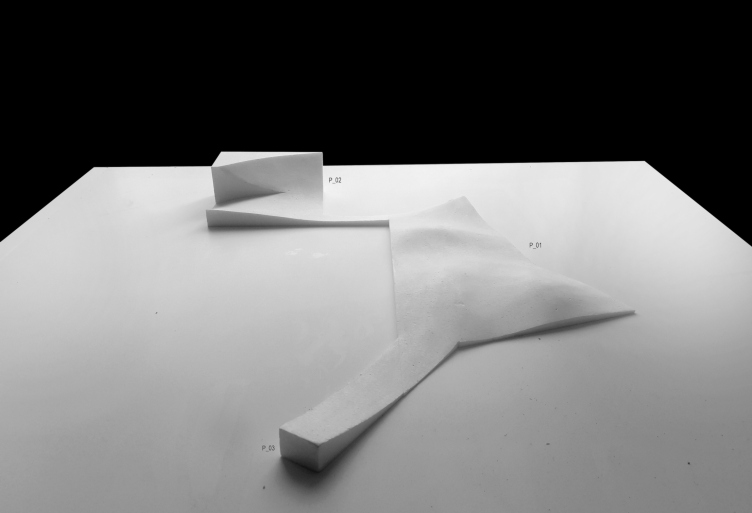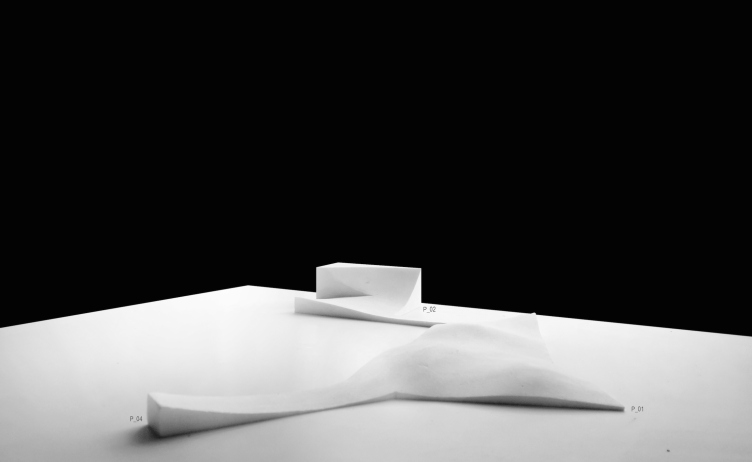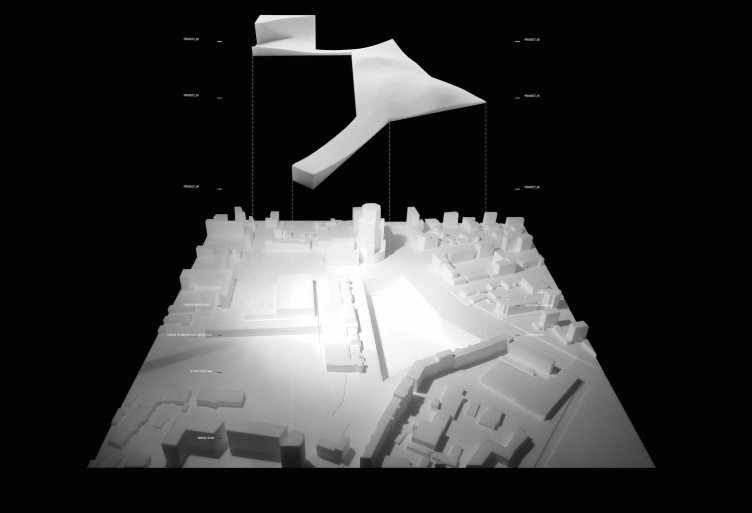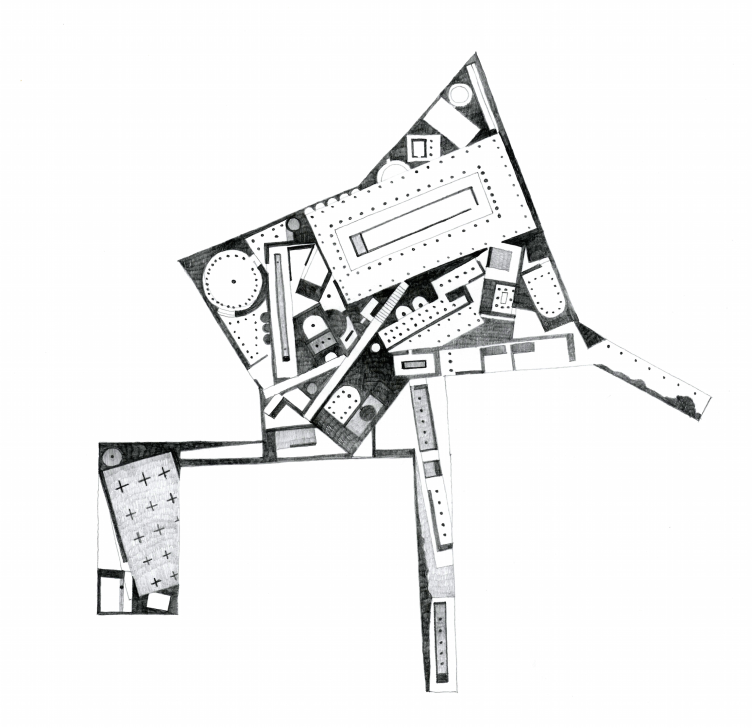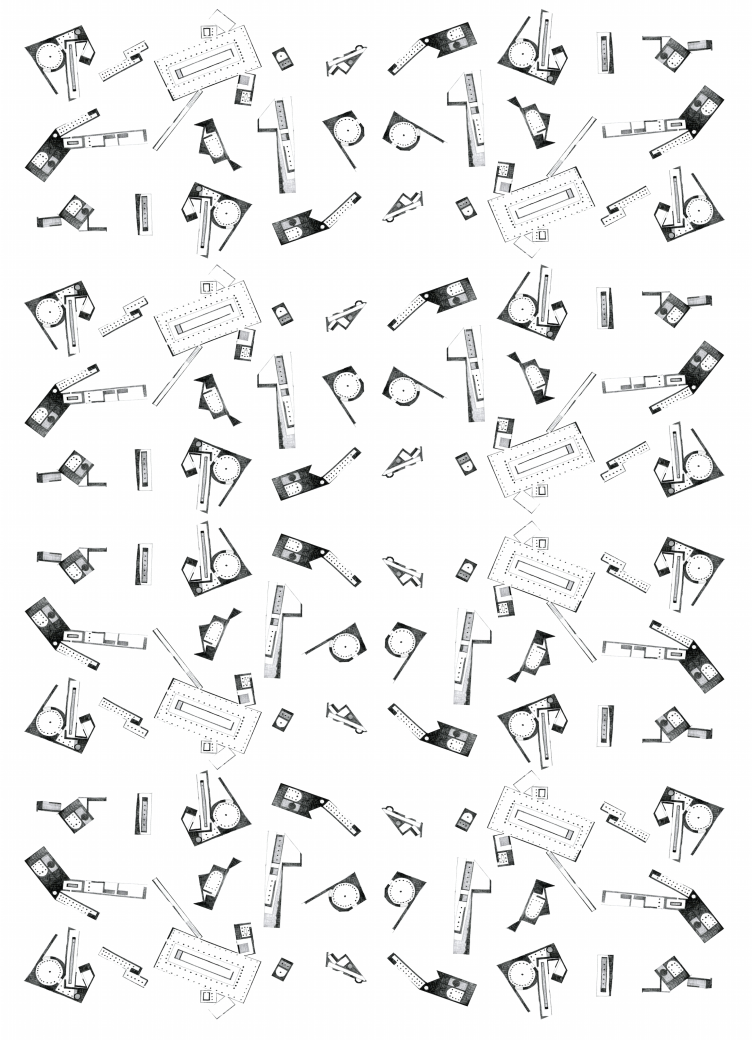In May 2015, the project of the transfer hub “Paveletskaya”, including a parking lot and a shopping center and developed by NIiPi General Plan of Moscow, by order of OAO “RV-Metro” was presented at public hearings in Moscow.
The client of the transfer hub project, which this publication is devoted to, was OOO “Spezelektromontazh”, supported by Moscow Investors Association. September 23 of the current year, this project was first reviewed and approved at a meeting at Moscow Committee of Architecture and Urban Development with the participation of the chief architect of the capital. Following the results of this meeting, the authors were recommended to present additional variants of stylistic solutions for the square, based on the suggested approach. In its project of the transfer hub “Paveletskaya”, the bureau of Ruben Arakelyan and Ayk Navasardyan proposes a transformation of Paveletskaya square and the surrounding territory into a parking area united by one concept.
The project for a transfer hub “Paveletskaya". Interiors. 2015 © WALL bureau
The park idea has been expressed through the “reaction” of the square to the transportation and pedestrian traffic with the changing vertical geometry of the surface and the solution of the multifunctional complex on Dubininskaya street – where the construction forms a shape of a “cliff” with a “lens” opened towards the square. The new concept of the square changes the Moscow reality by creating an absolutely new model of “urban emptiness” with different forms of activities, spatial scenarios and types of perception (forest, foundation pit, lakes, green hills, yards of rain, yards of snow, alleys of silence). According to the authors’ idea, the new landscape geometry covers the industrial and technological space of the transfer hub like moss.
Besides the park itself, the architects plan an underground space, hotel complexes with suites on Dubininskaya and Kozhevnicheskaya streets and a new “Aeroexpress” terminal.
The project for a transfer hub “Paveletskaya". Square. 2015 © WALL bureau
The project for a transfer hub “Paveletskaya". Square. 2015 © WALL bureau
The project for a transfer hub “Paveletskaya". 2015 © WALL bureau
Creating a park on the square and boulevards along the adjacent streets will not only allow to preserve the specific traits of this place, but will also accent the role of Paveletskaya street in the city by including it into the system of pedestrian areas and embankments. The park and the boulevards will form multiple scenarios for active leisure of the citizens. With that, all the commercial components of the project are located in the underground area under the park.
The project for a transfer hub “Paveletskaya". Project. 2015 © WALL bureau
All the parts of the underground space are connected with a logistical level distributing flows of people and transport. Its main entrance is planned to be arranged from Paveletskaya square.
The new “Aeroexpress” terminal will be located in place of the freight yard of Paveletsky train station, which in its turn – will move to Domodedovo airport. The terminal will make the transport of passengers to Domodedovo and from the airport comfortable and efficient. The authors propose to place a CitizenM-type hostel on the 1st and 2nd floors of the terminal, and restaurants and an urban leisure area for the passengers on the 3d floor.
The project for a transfer hub “Paveletskaya". Location plan. 2015 © WALL bureau
The project for a transfer hub “Paveletskaya". Values on the four projects. Project. 2015 © WALL bureau
The project for a transfer hub “Paveletskaya". Master plan. 2015 © WALL bureau
The project for a transfer hub “Paveletskaya". Master plan. 2015 © WALL bureau
The project for a transfer hub “Paveletskaya". General layout. 2015 © WALL bureau
The project for a transfer hub “Paveletskaya". Project 3. 2015 © WALL bureau
The project for a transfer hub “Paveletskaya". Layout fragment. 2015 © WALL bureau
The project for a transfer hub “Paveletskaya". Project 1. 2015 © WALL bureau
The project for a transfer hub “Paveletskaya". Section view. 2015 © WALL bureau
The project for a transfer hub “Paveletskaya". Section view. 2015 © WALL bureau
The project for a transfer hub “Paveletskaya". Axonomentry and section view. 2015 © WALL bureau
The project for a transfer hub “Paveletskaya". Axonomentry. 2015 © WALL bureau
The project for a transfer hub “Paveletskaya". Axonomentry. 2015 © WALL bureau
The project for a transfer hub “Paveletskaya". Axonomentry. 2015 © WALL bureau
The project for a transfer hub “Paveletskaya". Master plan. 2015 © WALL bureau
The project for a transfer hub “Paveletskaya". Model, shape. 2015 © WALL bureau
The project for a transfer hub “Paveletskaya". Model, shape. 2015 © WALL bureau
The project for a transfer hub “Paveletskaya". Model, shape. 2015 © WALL bureau
The project for a transfer hub “Paveletskaya". Model, shape. 2015 © WALL bureau
The project for a transfer hub “Paveletskaya". Search for the image. 2015 © WALL bureau
The project for a transfer hub “Paveletskaya". Search for the image. 2015 © WALL bureau

